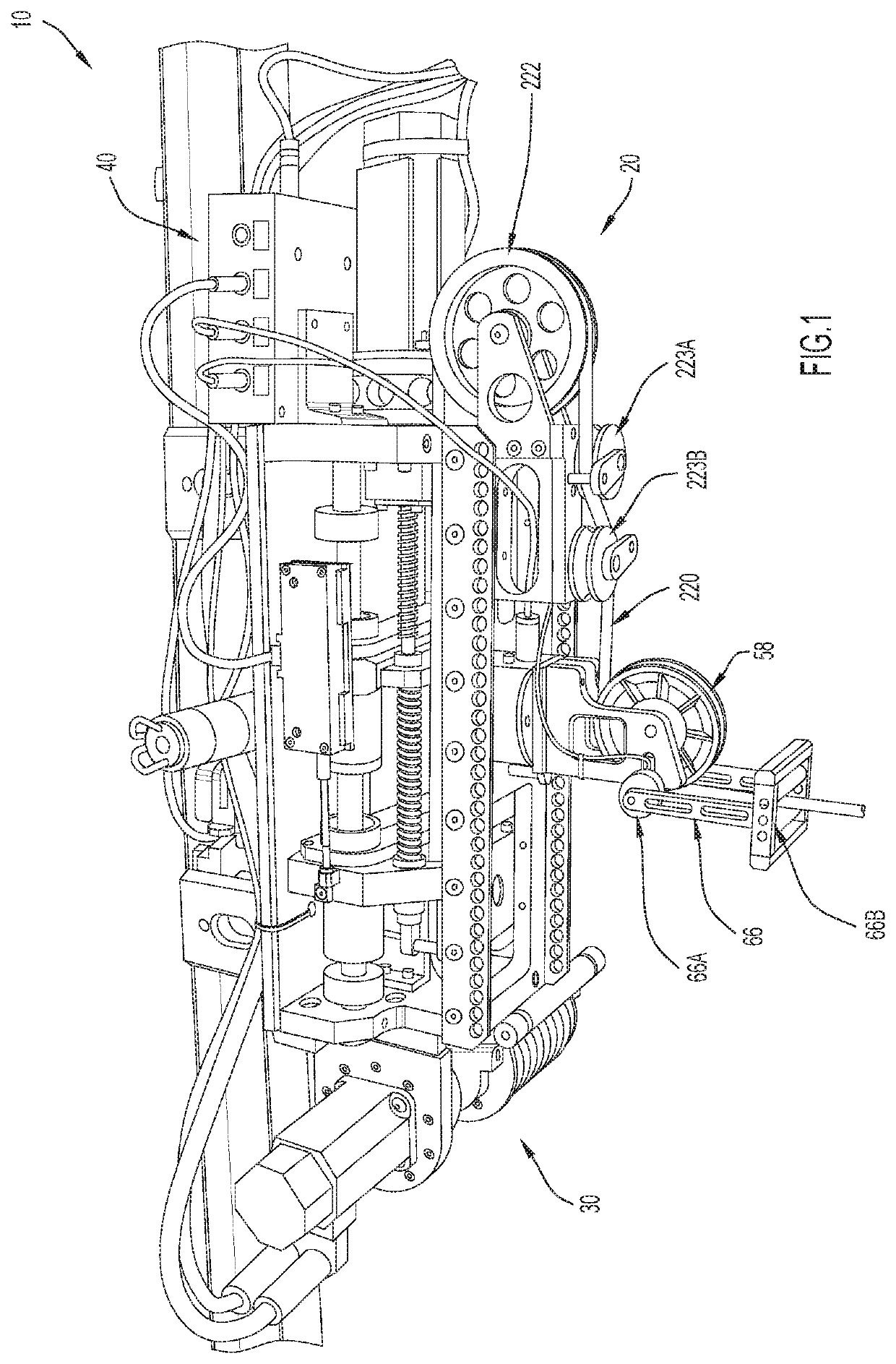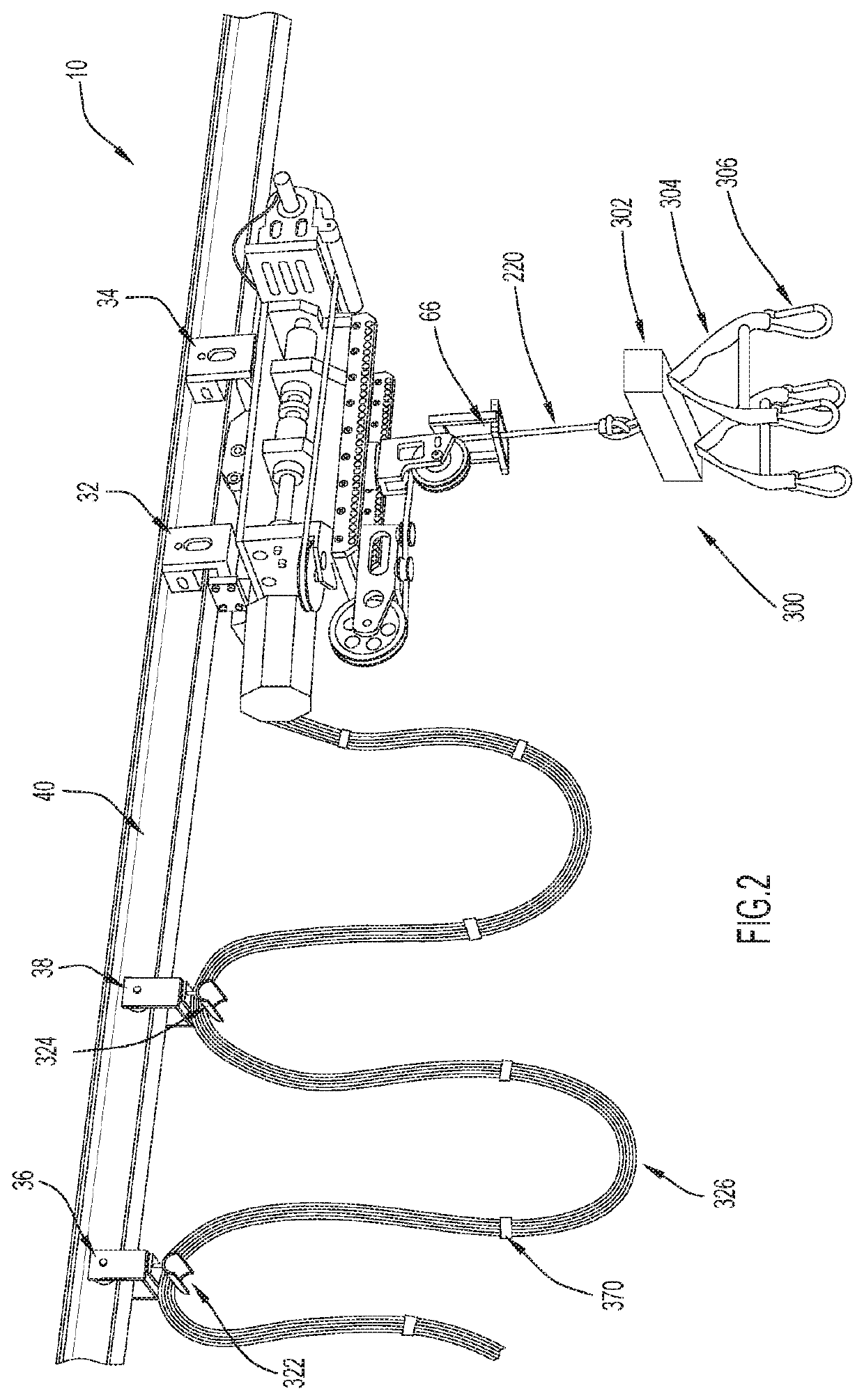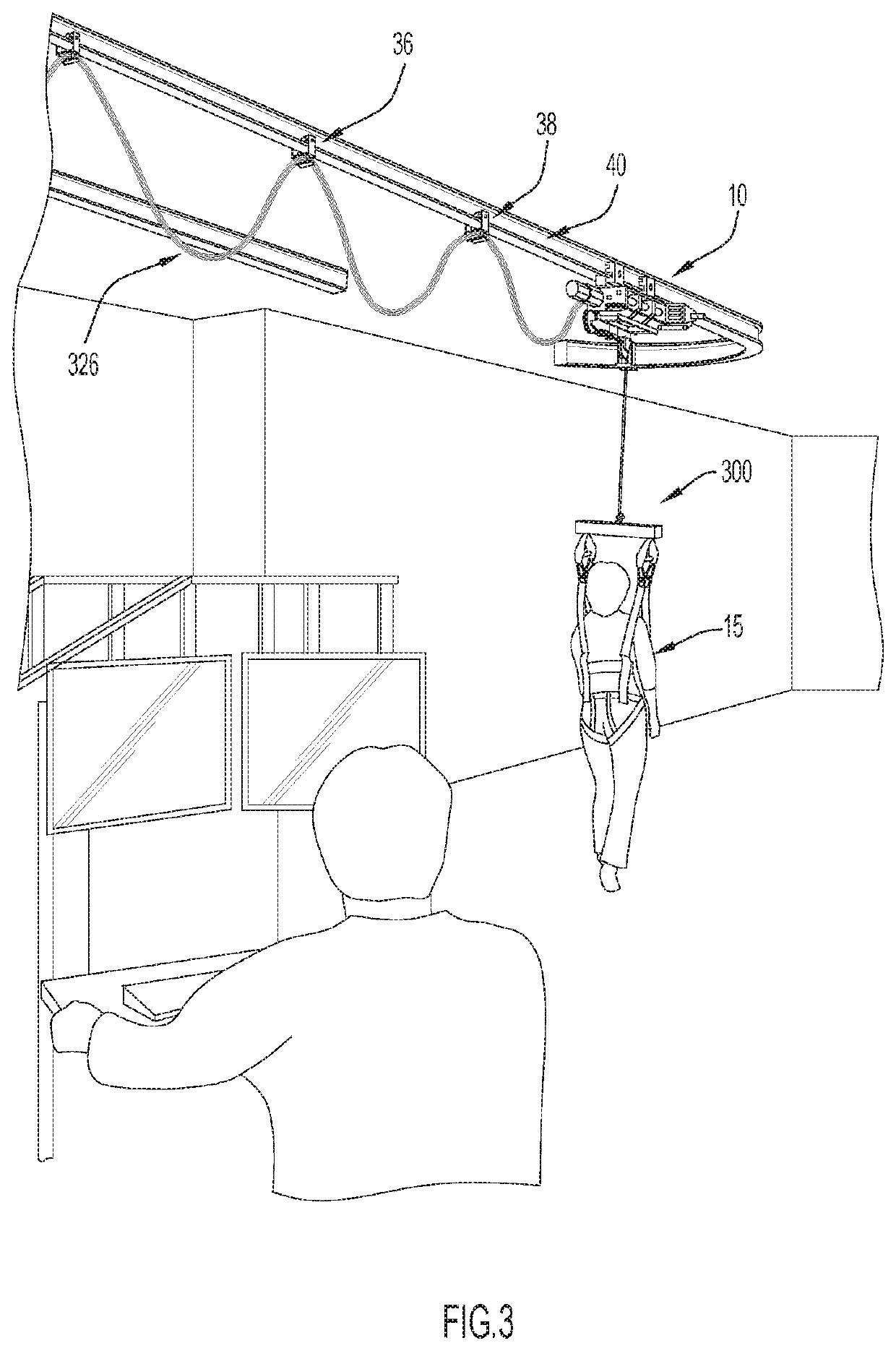Gait training via perturbations provided by body-weight support system
a support system and gait training technology, applied in the field of bodyweight support system, can solve the problems of poor endurance, difficult safe gait practice for both patient and therapist, and the greatest challenge for even the most skilled therapists, so as to improve the stepping response and reduce the risk of falling in such individuals
- Summary
- Abstract
- Description
- Claims
- Application Information
AI Technical Summary
Benefits of technology
Problems solved by technology
Method used
Image
Examples
Embodiment Construction
[0060]The system according example embodiments of the techniques of the present disclosure is a body-weight support system that allows individuals with severe to minor gait impairments to freely practice over-ground walking in a safe, controlled manner. The system 10 includes an unloading system 20 (see FIG. 1) that is attached to a driven trolley or movable support 30 that rides along a track 40, which in one implementation, can be mounted to a ceiling or other support structure. The track 40 includes straight sections as well as curved paths, allowing a subject 15 (see FIGS. 3 and 4) to practice walking around and / or over obstacles. In various embodiments, the track 40 may include any configuration and any combination of track sections.
[0061]As the subject 15 ambulates, the trolley 30 automatically moves forward or back, staying above the subject 15 so that the subject 15 only feels a vertical unloading force and does not have to drag the mass of the trolley 30. The system can mai...
PUM
 Login to View More
Login to View More Abstract
Description
Claims
Application Information
 Login to View More
Login to View More - R&D
- Intellectual Property
- Life Sciences
- Materials
- Tech Scout
- Unparalleled Data Quality
- Higher Quality Content
- 60% Fewer Hallucinations
Browse by: Latest US Patents, China's latest patents, Technical Efficacy Thesaurus, Application Domain, Technology Topic, Popular Technical Reports.
© 2025 PatSnap. All rights reserved.Legal|Privacy policy|Modern Slavery Act Transparency Statement|Sitemap|About US| Contact US: help@patsnap.com



